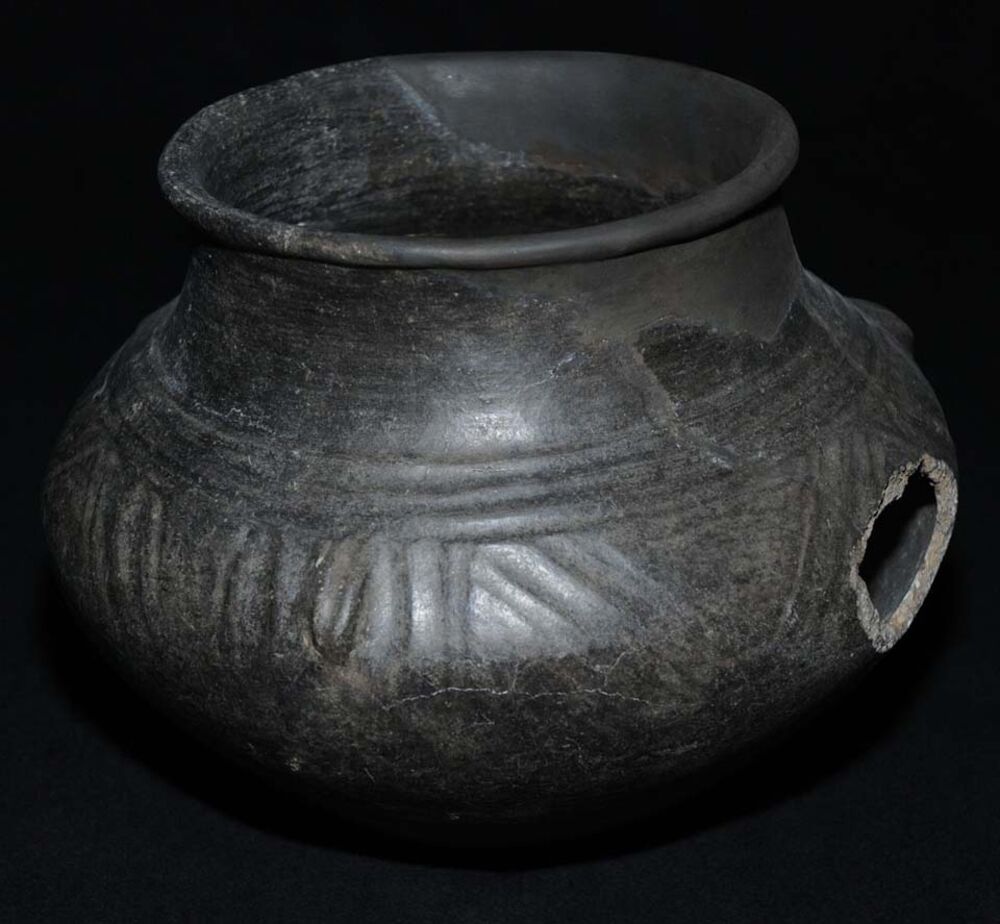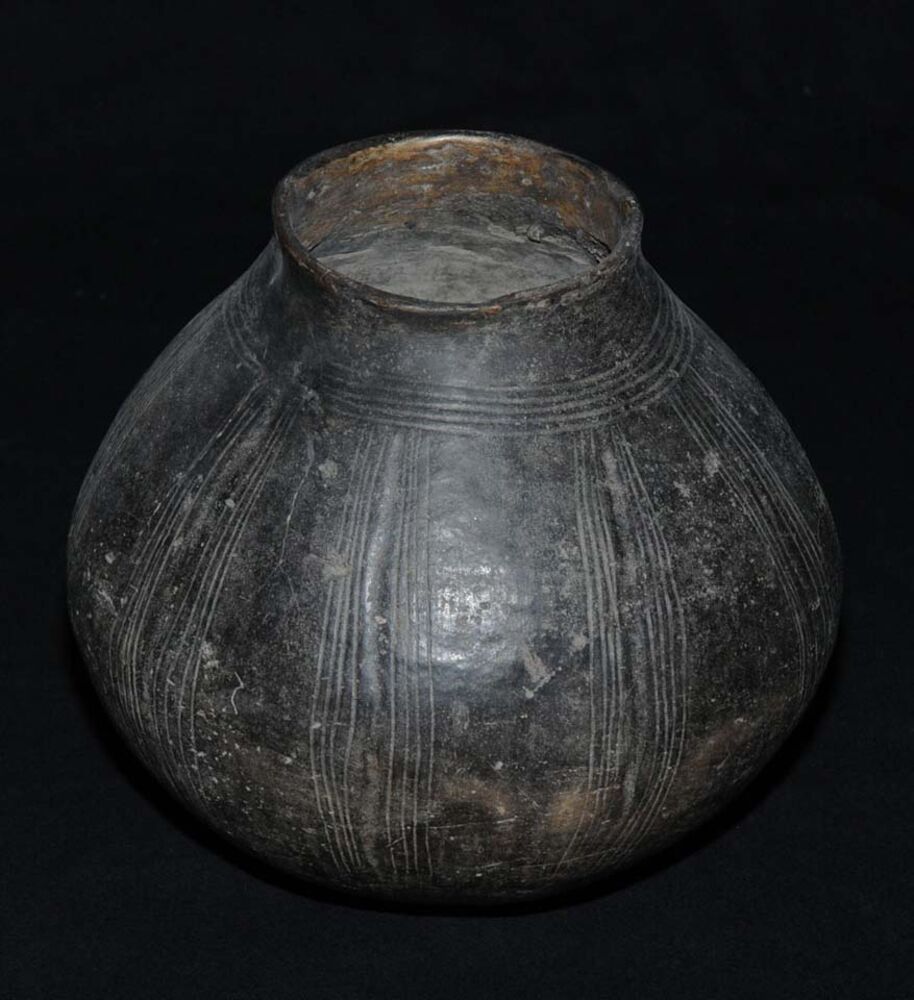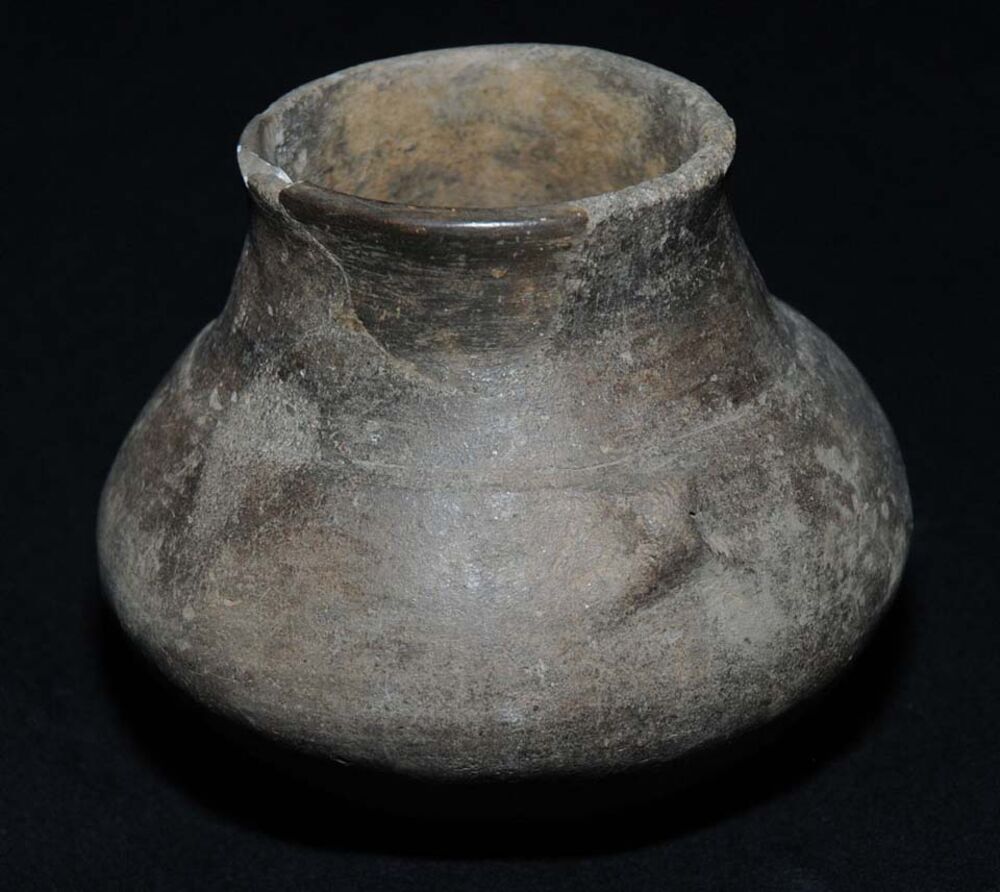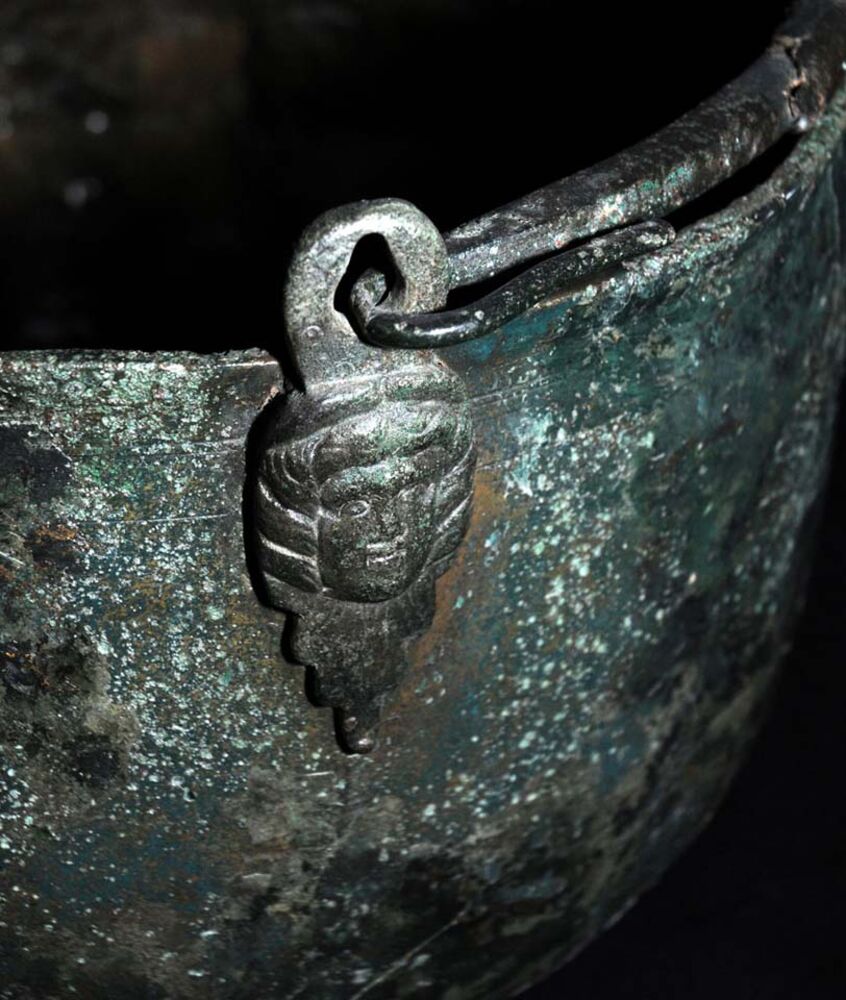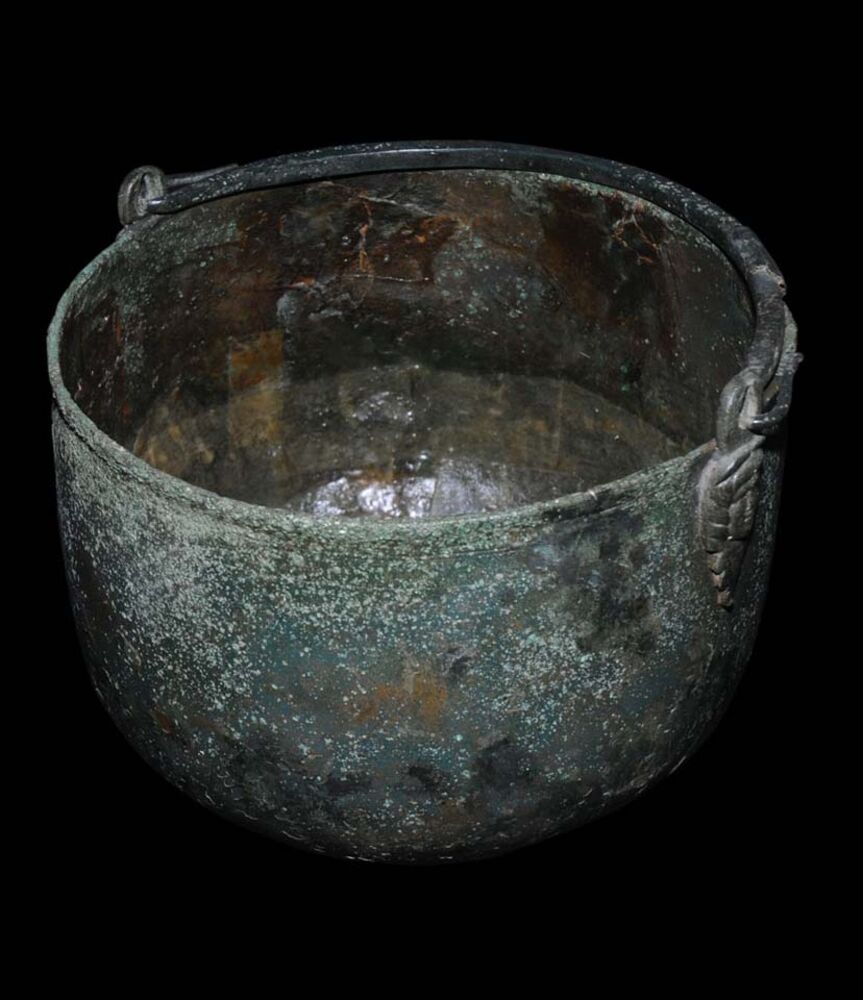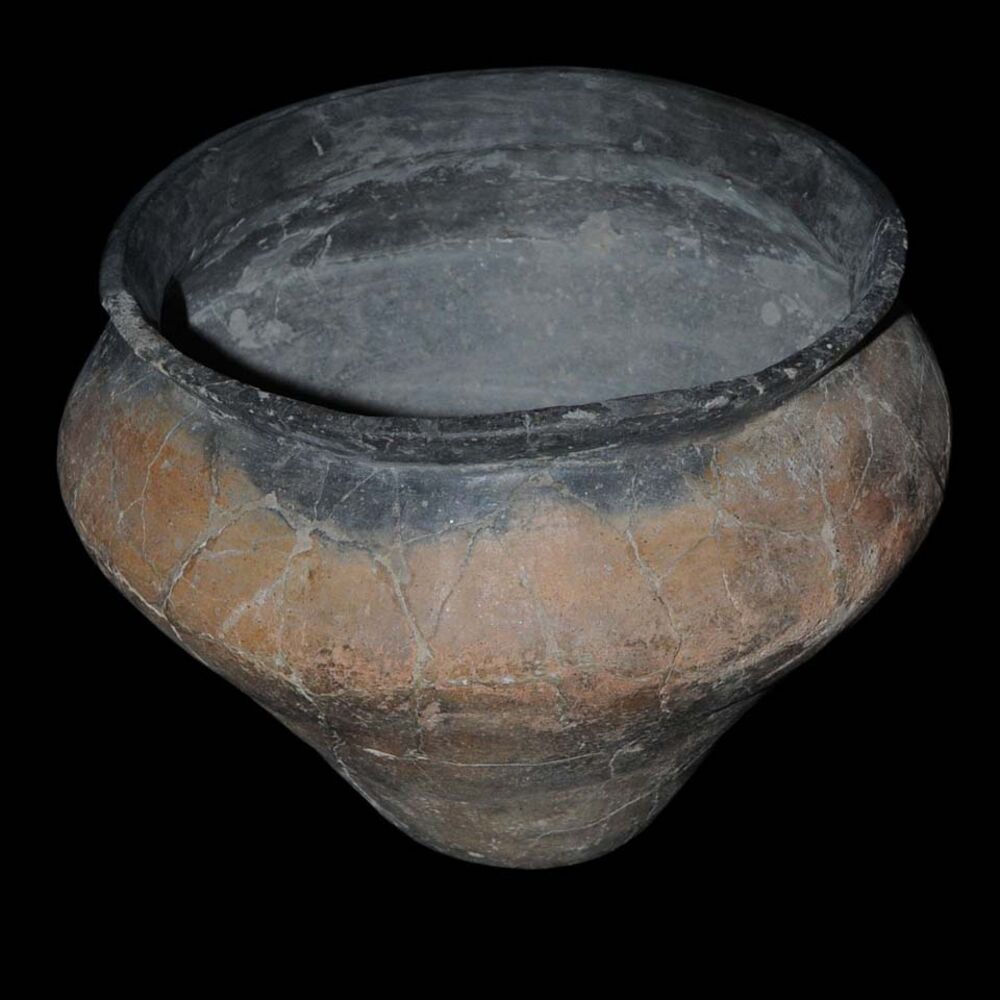52 Vessels for the Afterlife
Ceramics have been part of the equipment of graves since the Neolithic Age. Drinks and food were filled into the vessels for the journey into the afterlife. Until the Migration Period, clay vessels also served as funerary urns for cremated human bones. A special feature are Roman metal vessels, which were often used as urns by the Germanic tribes in secondary use.
Info: Showcase 52

Urn with "Spirit Hole"
Age: um 250 n. Chr. Roman Imperial Period
Roman Imperial Period: With the beginning of iron smelting around 700 BC, the new, harder iron took the place of bronze. The Iron Age is the third major period in human history after the Stone Age and the Bronze Age. In northern Europe it is divided into the Pre-Roman Iron Age, which covers the period from the end of the Bronze Age to the expansion of the Roman Empire at the turn of the century. And the Roman Imperial Period, in which the completely new way of life introduced by the Romans, can also be clearly seen in Free Germania. With the introduction of writing, European prehistory ends - early history begins.
Material: Ceramics
Location: unknown

Accessory Vessel
Age: um 100 n. Chr. Roman Imperial Period
Roman Imperial Period: With the beginning of iron smelting around 700 BC, the new, harder iron took the place of bronze. The Iron Age is the third major period in human history after the Stone Age and the Bronze Age. In northern Europe it is divided into the Pre-Roman Iron Age, which covers the period from the end of the Bronze Age to the expansion of the Roman Empire at the turn of the century. And the Roman Imperial Period, in which the completely new way of life introduced by the Romans, can also be clearly seen in Free Germania. With the introduction of writing, European prehistory ends - early history begins.
Material: Ceramics
Location: HH-Langenbek
Bowl (deeply engraved)
Age: um 2500 v. Chr. Neolithic period
Neolithic period: In the Neolithic period, people began for the first time to actively shape and change their environment: sedentarisation was one of the essential prerequisites for civilisational progress. Farmers cleared forests for their settlements, fields and for keeping livestock. They built their farms out of wooden posts, wattle and daub and clay. Cattle, pigs, goats and sheep are recorded as domestic animals. The diet of the people was now enriched by cereals such as wheat and barley, which were cultivated on farmland.
Material: Ceramics
Location: HH-Fischbek

Hemmoor Bucket
Age: um 250 n. Chr. Roman Imperial Period
Roman Imperial Period: With the beginning of iron smelting around 700 BC, the new, harder iron took the place of bronze. The Iron Age is the third major period in human history after the Stone Age and the Bronze Age. In northern Europe it is divided into the Pre-Roman Iron Age, which covers the period from the end of the Bronze Age to the expansion of the Roman Empire at the turn of the century. And the Roman Imperial Period, in which the completely new way of life introduced by the Romans, can also be clearly seen in Free Germania. With the introduction of writing, European prehistory ends - early history begins.
Material: Brass
Location: Altenwalde
Urn with Cremation
Age: um 400 n. Chr. Migration period
Migration period: Today, the transitional period from Antiquity to the Middle Ages is usually defined as the time of the migrations of the peoples from the 4th to the 6th century and the associated confrontation of the Germanic peoples with the culture of Antiquity and Christianity. However, the penetration of Germanic tribes into the Roman Empire did not mean the complete demise of ancient culture and its social and economic structures, as older research claims. Where the Roman Empire had had a formative influence for centuries, the old structures, institutions and traditions remained partially intact.
Material: Ceramics
Location: HH-Kirchsteinbek

Urn
Age: um 750 n. Chr. Middle Ages
Middle Ages: The beginning of the Middle Ages is generally equated with the end of the migration of peoples in Europe, which came to a halt at about the end of the 5th or beginning of the 6th century AD, and the concomitant collapse of the Western Roman Empire. The Middle Ages stood between antiquity and modern times and are characterised by the confluence of Christian and ancient as well as Celtic, Germanic and Slavic developments. With the Renaissance and the Reformation, the modern era began at the latest at the beginning of the 16th century.
Material: Ceramics
Location: Maschen

Urn with Cremation
Age: um 100 v. Chr. Iron Age
Iron Age: With the beginning of iron smelting around 700 BC, the new, harder iron took the place of bronze. The Iron Age is the third major period in human history after the Stone Age and the Bronze Age. In northern Europe it is divided into the Pre-Roman Iron Age, which covers the period from the end of the Bronze Age to the expansion of the Roman Empire at the turn of the century. And the Roman Imperial Period, in which the completely new way of life introduced by the Romans, can also be clearly seen in Free Germania. With the introduction of writing, European prehistory ends - early history begins.
Material: Ceramics
Location: Ehestorf-Vahrendorf

